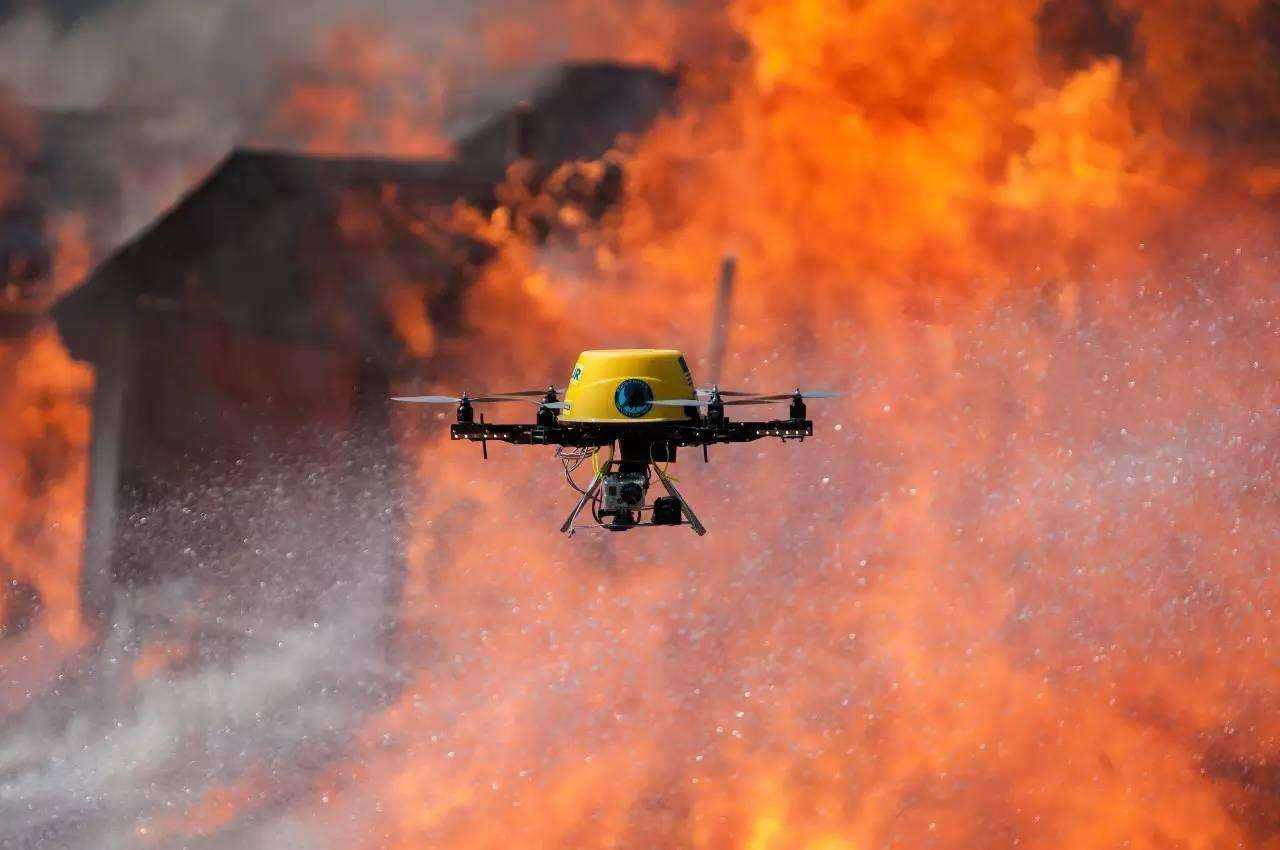Emergency rescue UAV
1. Disaster investigation. When a disaster occurs, the use of UAV for disaster investigation, one is that it can ignore the terrain and environment, and carry out the investigation flexibly, especially in some emergency and dangerous disaster scene, when the investigation team is unable to carry out investigation, UAV can quickly carry out investigation. Second, UAV detection can effectively improve the efficiency of investigation, identify the key factors of disasters and accidents at the first time, so that commanders can make correct decisions. Third, it can effectively avoid casualties. It can not only prevent people from entering toxic, flammable and explosive environment, but also comprehensively and carefully grasp the site situation.
2. Monitoring and tracking. The role of UAVs is not limited to disaster detection. The scene of various disasters and accidents faced by the fire forces is always changing rapidly. In the process of dealing with disasters and accidents, real-time monitoring and tracking by UAV can provide accurate changes of disaster situation, which is convenient for headquarters at all levels to grasp the dynamic disaster situation in time, so as to make quick and accurate countermeasures and minimize disaster losses.
3. Assist in rescue. The use of UAV integration or flexible carrying of key equipment can provide help for rescue in a variety of situations: to open up a rescue way for rescue. For example, in the rescue of water and mountain, the existing throwing device has great limitations in the use environment and scope, and the accuracy is poor. The use of UAV assisted throwing rope or carrying key equipment can create a new way for rescue and open up a rescue channel, which is accurate and efficient.
Integrated communication equipment, using UAV as communication relay. For example, in the earthquake, mountain and other environments with communication blocking, the use of UAV integrated transmission module, as a temporary relay station, so that the establishment of wireless communication links in extreme environments. UAV is used for emergency mapping. The UAV integrated aerial photogrammetry module is used to collect and transmit all the information of the disaster scene to the scene command department for emergency mapping of the terrain of the disaster site, so as to provide strong support for the rescue.
4. Auxiliary supervision. Using aerial photography to realize comprehensive and real-time monitoring of high-rise and super high-rise buildings, timely detection of fire hazards, real-time fire control on fire scene, building fire inspection or on-site fire image storage, and real-time access of aerial monitoring video to other security or fire-fighting monitoring systems.
Technical advantages
With the use of advanced technology flight control platform and front and back video surveillance transmission system, with the perfect flight and ground support system, UAV can implement long and long time air surveillance on the ground, thus achieving low integrated cost for real-time monitoring and assistance to the areas which traditional methods can not get involved. Its intelligence and advanced nature are reflected in the patrol path planning. In addition, it plays an important role in the development of emergency plans, the establishment of a rapid response mechanism, on-site fire archiving and evidence collection.
Its technical advantages are as follows:
1. Flexible. Small UAV is light in weight and can be controlled by flight control. It only needs 1-2 people to complete this kind of operation task. In the case of poor road and traffic interruption, you can take it to the scene of disaster and accident on foot, and the take-off conditions are very simple, there is no requirement on the terrain, and the UAV is easy to carry, so it has strong flexibility.
In addition, the flight speed of UAV is easy to control, the turning radius is small, the maneuverability is good, and the flight direction can be flexibly controlled, and the airborne camera can also track the shooting object; the UAV can also quickly reach the designated place, has fast response ability, and has strong adaptability to the environment and climate conditions. In 2014, during the “sacred mountain” support test in talchin, Tibet, the UAV was in the 6 It is much smaller than large manned aircraft to complete the flight mission under the conditions of cloudy and rainy weather; the takeoff conditions only need a few square meters of open space, and there are no prominent obstacles around. When operating at low altitude, it is very limited by climatic conditions, and the speed of obtaining images is very fast, which can play a stable and reliable role in the investigation within 10 km.
2. Comprehensive vision. UAV can realize beyond the horizon control through wireless technology, so it has a very comprehensive vision. According to the field demand, UAV can operate from different angles and distances under different light conditions. It can not only realize the global shooting of the target at high altitude, but also adjust the distance and angle. Through remote control of UAV and camera, images can be collected and transmitted in real time according to actual needs. Especially in low altitude flight, UAV has strong tracking and shooting ability, and the image resolution obtained by airborne camera is very high. If equipped with night vision function such as thermal vision, the video included will be more comprehensive. This way provides a strong guarantee for the realization of real-time air monitoring of disaster and accident scene, and can effectively improve the investigation ability of fire forces in emergency rescue.
3. The operation is simple. From the technical point of view, the remote video transmission and control system of UAV is connected to the ground station through network and interface, and the command center is accessed through optical fiber. Therefore, the real-time video of UAV camera can be directly viewed through remote camera and its auxiliary equipment. Usually, users only need to realize the UAV’s remote control








